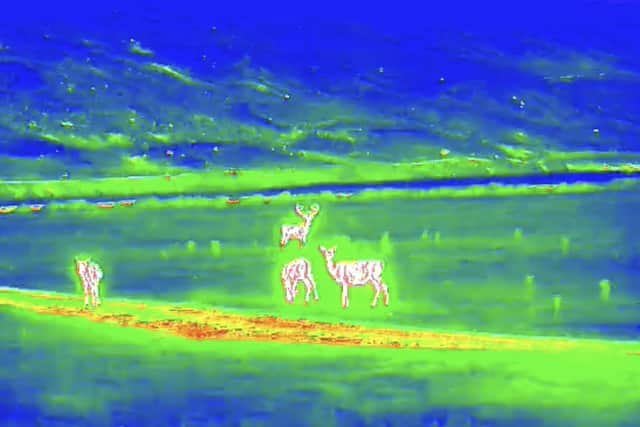Special safari uses heat-seeking tech to reveal night-time antics of Scotland’s iconic wildlife
Using cutting-edge thermal imaging cameras, visitors will be able to see wild animals such as deer, foxes, badgers, pine martens, hedgehogs and rabbits when they would usually be hidden under cover of darkness.
Connell Outdoor Pursuits, which is based in the Dornoch area of Sutherland, will run the tours during the late evening or at night, depending on the time of year. Numbers will be restricted to three people, including children over the age of nine years old. The firm also offers a range of daylight experiences such as personalised archery and clay pigeon shooting, scenic driven tours in all-terrain vehicles, custom activity packages and local fishing.
Advertisement
Hide AdAdvertisement
Hide AdKurt Connell, owner of Connell Outdoor Pursuits, is also a member of Venture North, the destination management organisation that promotes responsible tourism in the far north Scottish Highlands. He said: “Our new thermal imaging wildlife safaris are a great new way for visitors to observe a range of species up close after dark, including some of our iconic Highland wildlife.”
Meanwhile, thermal imaging technology is also being used to spy on pine martens at the other end of the country as part of a trial to assess how populations of the once rare species are faring. Forestry and Land Scotland (FLS) is testing out heat-sensitive cameras as a way of monitoring the occupancy of more than 100 artificial den boxes located around Galloway Forest over the past year.
The results have been positive. Now the agency is working on plans to roll out the technology at other sites across the country to help paint a picture of pine marten populations on both local and national levels.
The cameras can detect a heat source inside the den boxes at any time of year, which is especially useful during crucial periods such as spring, when pine marten kits are born, and also in winter, when den boxes are used for shelter in harsh weather.
Using the non-invasive technology to identify whether pine martens are using the boxes means FLS workers no longer need to open each one to check for occupancy, which can disturb and cause stress for the animals housed inside.


A significant increase in the local pine marten population has been recorded during the Galloway project over the past 12 months. Several factors are thought to be behind the rise in numbers, including installation of the den boxes, an increase in voles in the area – one of the main food sources for pine marten – and good forest management.
“We have seen the most productive year for pine marten kits being born in Galloway Forest,” said Kim Kirkbride, environment forester at FLS. “Having a bountiful food supply means more pine martens are able to produce offspring.
“The new thermal imaging technology ensures we can identify how many den boxes are in use over crucial times of the year. What’s even better is that we can monitor the den boxes at a safe distance, so we are not disturbing any occupants.”
Comments
Want to join the conversation? Please or to comment on this article.